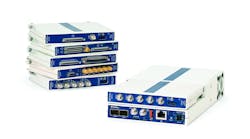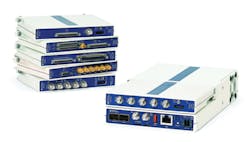Autotestcon focuses on controlling ATE costs
IEEE Autotestcon convened last Nov. 3 in National Harbor, MD, with John Johns, Deputy Assistant Secretary of Defense (Maintenance), in attendance to deliver a keynote speech on Tuesday. “We face a full spectrum of threats, from individual terrorists to states armed with conventional and nuclear weapons,” he said, in an address whose opening moments were punctuated by false alarms. Unfortunately, the threats we face are all too often real, and consequently, “We need advanced systems that can operate in harsh environments and that we can build and maintain with limited resources.”
He called for commitments to true innovation, collaboration, and leadership. Specifically, we spend $2 billion annually on removing and processing subsystems with “no fault found. Let’s cut that in half in five years,” he said. Further, “We spend $25 billion on electronic system maintenance. Let’s reduce our baseline by 25% in 10 years.”
A DoD plenary session panel titled “Future Technology Needs” followed the opening keynote. The prime focus was constraining the cost of ATE, which had reached $51 billion during the Reagan defense-budget era, according to panel moderator Bill Ross of Eagle Systems.
Ross and fellow panelists (he represented Naval aviation’s perspective on some issues as well as serving as moderator) cited cybersecurity as well as TPS standardization, ATS processes and frameworks, and next-generation test technologies as key issues, with benefits to be had by sharing and leveraging information on test technologies among the services where practical.
Panelists representing all four U.S. services cited such factors as the penetration of FPGAs into test systems; antitampering technology; electromechanical, electro-optical, and high-voltage weapons systems; net-centric diagnostics; and cybersecurity as sometimes overlapping issues of concern.
Dr. James Truchard, president and CEO of National Instruments, delivered his first Autotestcon keynote address, titled “The Evolution of Test Instrumentation,” on Wednesday morning. He recounted how, when he was working on Navy sonar beamformers and transducers, he realized that no test gear for what he needed existed, so he designed his own, developing the concept of “virtual instruments.” That beginning has led to today’s National Instruments, a $1.2 billion per year company with 7,080 employees. NI works with 35,000 organizations, he said, including 7,000 universities, and no one industry represents more than 15% of the company’s sales.
Among exhibiting companies, Ridgetop Group highlighted IoT-enabled measurement systems. President and CEO Douglas L. Goodman and co-authors presented a paper titled “Advanced Diagnostics and Anomaly Detection for Railroad Safety Applications,” which described a MEMS triaxial accelerometer module mounted on the hubs of the wheels of a boxcar. The module wirelessly transmits sensor data to a collection gateway hub mounted inside the boxcar. The goal, which they found to be feasible, is to detect anomalies in railroad tracks and rolling stock as well as anomalies of bearings, rotating shafts, and gears. On the exhibit floor, Ridgetop Group presented a wireless IoT sensor module for use in helicopter rotors.
Other vendors mostly kept to their exhibit plans as outlined in our November MIL/aero special report and on www.evaluationengineering.com/. For example, National Instruments highlighted its FlexRIO platform. (Editor’s note: Figure 7 on page 14 of our November issue incorrectly suggested that NI would highlight a CompactRIO controller. The correct product, the FlexRIO, accompanies this article.)
Courtesy of National Instruments
Brand new at the show was a product jointly developed by NI and Astronics Test Systems, who touted their collaborative efforts to deliver PXI-based products designed for the aerospace and defense community. The combination of Astronics’s strength in test-system integration and NI’s leadership in PXI-based automated test systems is expected to produce a portfolio of instruments for ATE applications.
The first product to be delivered as a result of the collaboration is the Astronics Frequency Time Interval Counter (FTIC) for PXI Express, modeled after the Astronics VXIbus 200-MHz universal counter. Designed for full TPS compatibility, the instrument can replace existing VXI-based FTICs and deliver the same capability in a newer PXI-based subsystem. This upgrade was achieved by using the analog circuitry, firmware, and driver software in the existing VXI module. Customers can purchase the Astronics FTIC for PXI Express and future products expected to become available as a result of the collaboration, as well as support service, through the worldwide NI sales channel.
Pickering Interfaces highlighted a variety of products, including a modular breakout system for fault insertion, designed in partnership with OPAL-RT Technologies. The system combines a breakout box (BoB) feature set with added flexibility and a fault insertion unit (FIU) to provide access to all UUT signals during test-program development. Mating the FIU chassis directly to the Breakout System minimizes cabling, creating a more compact reliable design and improving signal integrity. In addition, all cables to the simulation system and the UUT are located behind the front panel of the BoB, creating a simpler front panel that is less prone to damage.
The next Autotestcon is set for Sept. 12-15, 2016, in Anaheim, CA.

